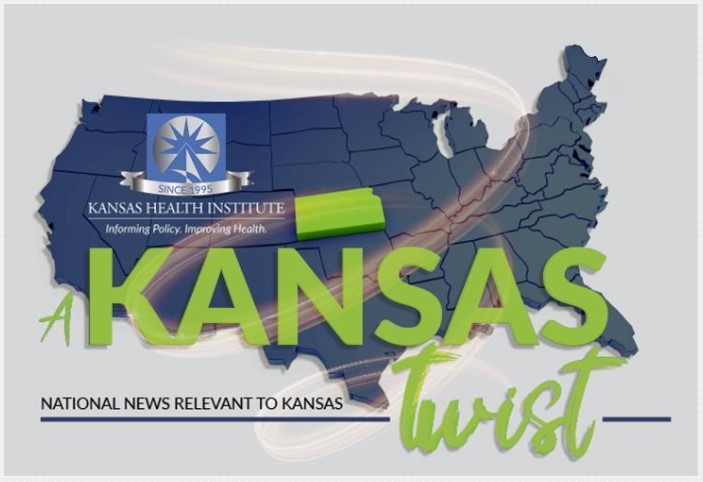Nationally and in Kansas, there has been growing concern about the disproportionate impact of COVID-19 on communities of color. A newly released heat map from the Othering and Belonging Institute at the University of California Berkeley shows that Kansas ranked 37 of 44 states for the largest racial disparity in coronavirus deaths. Data available from the Kansas Department of Health and Environment (KDHE) present much the same picture. While Blacks make up just 6.1 percent of the state population, they comprise 25.4 percent of the 236 deaths due to coronavirus for which race is reported. Further, Kansans who are of Hispanic/Latino ethnicity are eight times more likely to contract COVID-19 then those who are not (13.90 per 100,000 and 1.74 per 100,000, respectively). This edition of A Kansas Twist provides information on the equity task forces that have been formed around the country and describes data that highlight the uneven burden of disease in Kansas.
Sign up here to receive these summaries and more, and also follow KHI on Facebook, Twitter and LinkedIn. Previous editions of A Kansas Twist can be found on our ARCHIVE PAGE.
Although there are many contributing factors to the inequity described by these data, researchers and advocates emphasize the importance of understanding the root causes of COVID-19 health disparities in the historical context of discriminatory policies and ongoing systemic racism in the United States. Communities of color continue to experience disparities related to underlying health conditions, barriers to care, living conditions and work environments. For example, people of color are more likely to work jobs deemed “essential” during the COVID-19 crisis or live in multi-generational households.
As COVID-19 continues to cast a spotlight on racial and ethnic disparities, communities across the country have begun to implement efforts at the local and state levels. Some efforts focus on placing testing sites in neighborhoods with higher risk of being impacted by COVID-19, providing culturally appropriate communication and outreach, and implementing programs that provide housing to individuals who have been exposed to COVID-19, such as Nebraska Accommodation Project.
To examine causes and solutions to COVID-19 racial disparities, states such as Louisiana, Michigan, Tennessee and Virginia created COVID-19 equity cross-sector task forces. These task forces were established by executive order of the governor, by state health departments or by offices of minority health. Virginia included their task force in their unified command response chart as a way to institutionalize considerations for equity in the COVID-19 crisis as well as in future emergencies. Common priorities across task forces focus on the importance of robust data collection, timely information sharing with communities, identification of best practices, development of recommendations for policy change, and identification of funding to support the work of the task force. Several unique focus areas are highlighted below:
Louisiana COVID-19 Health Equity Task Force
-
- Assess the status of the state response as it affects vulnerable populations and the impact of COVID-19.
- Examine political, economic, social, technological and legal dynamics that are indicative of health equity to formulate a statewide dashboard.
Michigan Coronavirus Task Force on Racial Disparities
-
- Hear from those living, working and serving communities to generate responsive solutions and policies to reduce disparities.
- Recommend changes to state law to support long-term economic, physical and mental health recovery following a pandemic.
Tennessee COVID-19 Health Disparity Task Force
-
- Hear from community and faith-based partners, academia, health care providers and public health officials to identify solutions and policies to reduce disparities.
- Examine existing data and monitor trends to further understand disparities.
Commonwealth of Virginia COVID-19 Equity Leadership Task Force
-
- Identify resources and decision points impacting marginalized communities and prioritize resources accordingly.
- Institutionalize equity considerations into future disaster planning events by embedding it in the senior level of the unified command structure.
Work to address the inequities exacerbated by COVID-19 is already underway in Kansas. Some efforts are related to increasing availability of COVID-19 data by race, ethnicity and ZIP Code. Recently, the Health Forward Foundation, in partnership with El Centro, the Urban League of Greater Kansas City and more than 75 partners across both Kansas and Missouri, including the Kansas Health Institute, urged both states to collect and publicly disseminate COVID-19 data. These data could supplement the information currently available through the KDHE COVID-19 Dashboard.
At the county-level, a Coronavirus Health Equity Task Force was formed in Wyandotte County to identify and implement strategies to eliminate disparities. This group consists of community leaders and stakeholders who provide guidance related to strategies that can lessen the unequal effect of COVID-19. Work of the group to-date has prioritized improving accessibility of COVID-19 testing.
For Kansas communities and nationally, addressing inequities will remain a priority issue during the COVID-19 pandemic and after. The Kansas Health Institute continues to monitor action taken across the state and the country to address COVID-19 related inequities.
